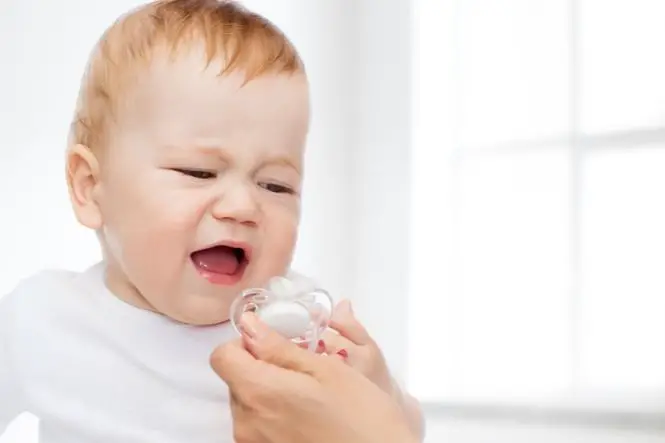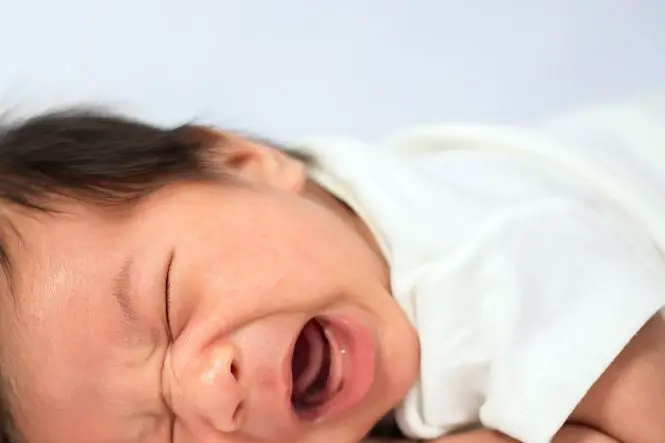Read this article to learn when to take your baby’s dummy away and what the best methods for dealing with dummy withdrawal are.
The best way to deal with toddler dummy withdrawal is to assign some days and time in the future where your child can say goodbye. It would be best if you mentioned that this would be happening in the days leading up to it so that it doesn’t come as a surprise to your child. It’s all about gradually shifting away from old habits.
Using a dummy is a way for your toddler to deal with stress, but taking away the dummy can add unwanted stress on your toddler. Toddlers like routines, so if turning to their dummy is part of how they deal with any situation that upsets them, you must go through this process properly so that you don’t get any withdrawal symptoms.
You were generally going to want to move slowly through this process as you’re going to be shifting your toddler’s routines so that they no longer need their dummy to deal with stressful situations. Try to introduce other things into their lives, such as toys or different activities, so they have other habits building up before taking the dummy away. Also, let them know beforehand to reduce stress.
Table of Contents
When to Get Rid of the Dummy
The general rule is that the sooner you can get rid of a dummy, the easier it will be on your toddler. Some people start as early as five months, whereas others may need longer to give up their dummy. You aim for around when they are one year old.
The key to taking the dummy away from your child is not to let them get emotionally attached to it in the first place. This isn’t like a specific toy or blanket where you want that to be the only thing you use at certain times. If you have multiple, that could also help its interest in an object to soothe them.
You will want to schedule when to get rid of your child dummy to fit their own development. You don’t want it to happen when they’re going through a sleep regression, as it can be a helpful tool to improve their sleep. You also don’t want it to coincide with adjusting to solid foods or potty training, as it can be frustrating for a child to learn multiple skills.
How to Prepare for Dummy Withdrawal
Starting dummy withdrawal is not something you want to get into without any kind of plan in mind. You will need to figure out what type of routine you want to build into your child’s life to replace their Reliance on the dummy. You also want to enjoy that there aren’t other stressors in their life that can make it more challenging to transition.
Removing your child Dummy from their life removes an item that brings them comfort. It’s a big step, so you must keep a few specific actions in mind before you start to take it away. These steps are:
- Not asking for permission: you should be talking to your child beforehand about what is happening, but this does not mean that you ask them if it is okay. Your child will never agree that taking away their pacifier is a good idea, so make sure that you tell them what will happen without actually asking any kind of permission.
- Show compassion: This will be a very stressful moment for your child as you take away something that is comforting to them. Make sure that you’re listening to your child’s fears and worries about it and repeat them back so that you can tell them that you understand where their feelings are coming from. It’s also essential that while you should be firm during this process, try your best not to get frustrated. It may seem on some days that they are regressing in their progress.
- Keep your ground: once you take away the dummy, you cannot give it back. Not even if you have to suffer through a 45-minute tantrum. It will not be a fun time for anyone involved, but you must ensure that your child knows that it is not coming back after you take away the pacifier.
The most important thing about going into taking away your baby’s pacifier is to have some kind of plan. Be aware of anything else that might cause stressors in your child’s life, and try to have as close to a stress-free environment as possible while going through the process. While you should be prepared to shift your plans, never go back on taking away the dummy.
What Are the Main Methods for Removal?
There are two main methods of removing the dummy from your child’s life. You can use one method or the other or put different characteristics together to make a plan that best fits you and your situation. Feel free to make minor changes in these methods to be more tailored towards your child.
The two methods for taking away your child’s pacifier are:
- The prep method is when you set a date and time a few days in the future for when your child has to say goodbye to their dummy. Inform your child that this is happening and frequently remind them throughout the days leading up to it. Caboodle countdown to the moment and then take away the pacifier when the deadline hits.
- The gradual method is when you start limiting your child’s dummy at two specific times. It could be that they aren’t it isn’t allowed to use it outside the house, or that they can only use it a certain number of times in the day. This will help them build up habits of going to other objects for comfort in stressful situations. Slowly narrow down the places or number of times that your child can reach for their pacifier and never go back on this decrease.
While these are the main methods that you can use to remove the pacifier from your child’s life, there are lots of other tactics that you can interweave with these methods to make it easier.
Some of the things you can incorporate are:
- Incorporate some kind of inside agent that took away the pacifier: This can be Santa, fairies, or whatever other outside agents you want to choose. Have this external agent replace the pacifier with something like a different toy or a fun treat to distract your child from the idea that their pacifier is truly gone.
- Make the dummy unappealing: this can be talking to your doctor about getting some non-toxic but awful tasting substance to put on the pacifier, or it can be cutting off the tip or splitting it down the center. If your child sees a broken dummy, it’s not going to be as satisfying for them to use it.
- Give it a new home: sometimes, kids don’t like the idea of a precious pacifier completely disappearing, so instead, come up with ideas for it to be in a New Home Instead. This can be planting it in the yard or putting it inside a stuffed animal. Just enjoy that it isn’t somewhere that the child can easily get to.
How To Start Toddler Dummy Withdrawal?
You will want to start dummy withdrawal for your child as soon as possible. Make sure that they aren’t going through any other changes such as potty training or some kind of sleep issue because they may rely on the dummy for comfort. The most important thing is that you build other routines so that they are no longer reliant on their pacifier over time.






